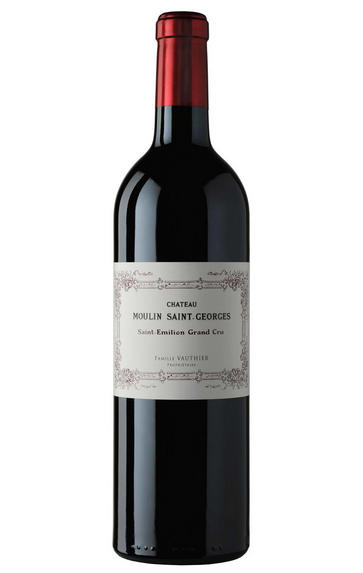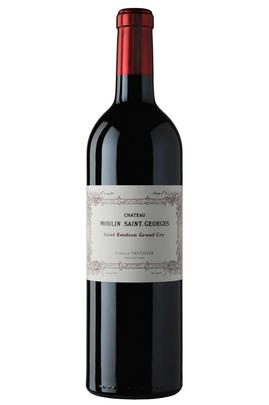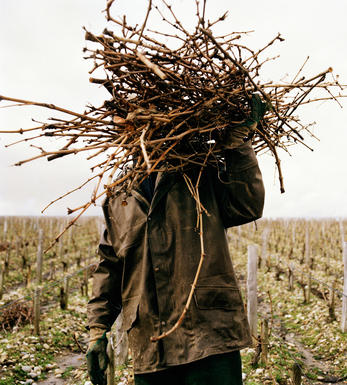
2005 Château Moulin Saint-Georges, St Emilion, Bordeaux

Critics reviews
Robert M. Parker, Jr. - 24/04/2006
Jancis Robinson - jancisrobinson.com - 18-Apr-2006
James Suckling - Wine Spectator - 31-Mar-2008
Robert Parker - Wine Advocate - Apr-2006
About this WINE

Chateau Moulin Saint-Georges
Château Moulin St Georges has been referred to as a junior version of Château Ausone as it is owned by the same proprietors, the Vauthier family. Its 17.3 acres of vineyards are located between those of Ausone and La Gaffelière and are well-sited on a south-west facing slope, known as the Pavie slope. The vineyards are planted with Merlot (66%), the rest (34%) Cabernet Franc and Cabernet Sauvignon.
The vines are expertly cultivated by Vauthier who firmly believes that a wine's quality is first and foremost a function of the vines and the fruit they bear. Consequently, yields are kept deliberately low and the grapes exclusively hand-harvested. Winemaking takes place in temperature-controlled, stainless steel tanks and the wine is then matured in 100% new oak barriques for 15-20 months. The wines are bottled unfiltered.

St Émilion
St Émilion is one of Bordeaux's largest producing appellations, producing more wine than Listrac, Moulis, St Estèphe, Pauillac, St Julien and Margaux put together. St Emilion has been producing wine for longer than the Médoc but its lack of accessibility to Bordeaux's port and market-restricted exports to mainland Europe meant the region initially did not enjoy the commercial success that funded the great châteaux of the Left Bank.
St Émilion itself is the prettiest of Bordeaux's wine towns, perched on top of the steep limestone slopes upon which many of the region's finest vineyards are situated. However, more than half of the appellation's vineyards lie on the plain between the town and the Dordogne River on sandy, alluvial soils with a sprinkling of gravel.
Further diversity is added by a small, complex gravel bed to the north-east of the region on the border with Pomerol. Atypically for St Émilion, this allows Cabernet Franc and, to a lesser extent, Cabernet Sauvignon to prosper and defines the personality of the great wines such as Ch. Cheval Blanc.
In the early 1990s there was an explosion of experimentation and evolution, leading to the rise of the garagistes, producers of deeply-concentrated wines made in very small quantities and offered at high prices. The appellation is also surrounded by four satellite appellations, Montagne, Lussac, Puisseguin and St. Georges, which enjoy a family similarity but not the complexity of the best wines.
St Émilion was first officially classified in 1954, and is the most meritocratic classification system in Bordeaux, as it is regularly amended. The most recent revision of the classification was in 2012

Cabernet Sauvignon Blend
Cabernet Sauvignon lends itself particularly well in blends with Merlot. This is actually the archetypal Bordeaux blend, though in different proportions in the sub-regions and sometimes topped up with Cabernet Franc, Malbec, and Petit Verdot.
In the Médoc and Graves the percentage of Cabernet Sauvignon in the blend can range from 95% (Mouton-Rothschild) to as low as 40%. It is particularly suited to the dry, warm, free- draining, gravel-rich soils and is responsible for the redolent cassis characteristics as well as the depth of colour, tannic structure and pronounced acidity of Médoc wines. However 100% Cabernet Sauvignon wines can be slightly hollow-tasting in the middle palate and Merlot with its generous, fleshy fruit flavours acts as a perfect foil by filling in this cavity.
In St-Emilion and Pomerol, the blends are Merlot dominated as Cabernet Sauvignon can struggle to ripen there - when it is included, it adds structure and body to the wine. Sassicaia is the most famous Bordeaux blend in Italy and has spawned many imitations, whereby the blend is now firmly established in the New World and particularly in California and Australia.


Buying options
Add to wishlist
Description
Owned by the Vauthier family of Ch. Ausone fame, this is just as jaw-dropping, in its own way, as its illustrious sibling. This is a proper St Emilion with the Ausone panache shining through. Made from 80% Merlot and 20% Cabernet Franc, it has a dark inky colour with a delicious Port-like nose of intense, rich, dark fruit. This is a sensuous wine with sweet, creamy forest fruits and earthy, floral and chocolate overtones. The tannins are big and ripe, completelely subsumed within the enormous fruit and long finish. Production is very limited here, with only 3000 cases made. Unmissable.
wine at a glance
Delivery and quality guarantee